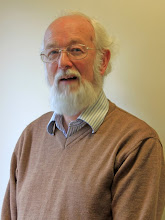We don't usually think of higher education as something that is internationally traded, but of course it is. It takes places in three ways: (1) the overseas students come to study at the UK university; (2) students study at a UK university via distance learning (sometimes with some local support for their studies, sometimes not); and (3) the UK university sets up a branch campus at a carefully selected overseas location, and actually delivers the education there, mostly using local staff. The latter model normally awards degrees of the 'home' institution, so an important aspect of making the model work successfully has to do with the monitoring and control of the quality of education provided at the overseas campus.
My own university, Heriot-Watt (based on the edge of Edinburgh) does all three of these things, and takes great pride in its strong international profile. Developing this profile is a deliberate part of the institution's academic strategy, and rightly so given all the pressures and constraints that nowadays face higher education institutions operating in the home market. Building a presence in other markets, provided it is done well, helps to make an institution more robust - financially and academically - in the face of these pressures.
However, expanding overseas also poses some challenges. For instance, to build teaching capacity in an overseas campus we need to employ good teachers, and are likely to expect them to carry quite heavy teaching loads. At the same time, while the teaching function is not to be neglected on the 'home' campus, there will typically be more pressure there for academic staff to be research active (for REF reasons, among others). So there can easily be some conflict between what we expect of academics at home, and what we expect of our academic staff working on an overseas campus. At times this can prove a difficult balance to get right.
For some years now, my university has had a small campus out in Dubai, part of DIAC - Dubai International Academic City, where we have delivered a variety of courses to over 1500 students. This week, though, First Minister Alex Salmond was out in Dubai with our Principal to open our new expanded facility out there, a £35 million development that will enable us to handle up to 4500 students on an expanded range of degree programmes. All the signs are that demand for places is already very buoyant, so if all goes well we should build up to full capacity operation in just two to three years, making us a key player in the United Arab Emirates. For the University, this is a really exciting development, building on years of solid experience in the region. As the Principal, Professor Steve Chapman, said at the launch:
“As Scotland’s international university, the official opening of our new state-of-the-art, eco-friendly Campus, built in partnership with Eikon International and offering world class facilities, demonstrates our ambition and continued vision for providing high quality and relevant Scottish Higher education in the region.”
What more can I say, except to wish this new development every success!


No comments:
Post a Comment